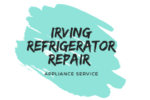Electrifying work means work related to electricity. Our lives operate entirely by using electricity nowadays. Without electricity, we won’t know what we will do. This article is extracted from the book called “300 Years of kitchen collectibles” by ” Linda Campbell Franklin “. Please leave your comment below.
Gadgets & Appliances
What is most interesting to me about this category of collecting is the social history behind it. First, there were the marketing efforts of power companies who could see the future and knew it had to be electric for their own survival. So power companies in the first quarter of a century drummed up business by actively selling that Electric future. It’s amusing to read articles written for their own trade journals. Such articles offer a background to our understanding of public ad campaigns in the first third of the twentieth century.
For example, an article in the Edison Electric Institute Bulletin of September 1934 tells about the development of a “distinctive and appealing character”-“Reddy Kilowatt, the Electrical Servant.” Reddy, also spelled “Ready” by some companies, formed the basis for a ‘program…to humanize the utility approach to the public by translating… the complicated business of serving electricity to all types of customers.” Reddy’s appeal holds strong today, although it is the rare customer who has a choice about whether or not to use electricity.
Nowadays, power companies issue occasional brochures on “saving energy,” and then spend the rest of their time lobbying before state assemblies asking for rate increases because of decreased usage, or fighting people who want to sell the excess power generated by privately-owned windmills. They are otherwise mired in a bureaucracy of meter-reading and kilowatt-hours. Obviously they neither have the time nor do they need to fund their own test kitchens as in the old days or pay well-known cookbook authors to prepare promotional cookbooks. And thankfully they have not used old Reddy to try to humanize nuclear power plants and high tension electric lines. Talk about zap.
The second aspect of the social history of household electricity is the utopian view that it would replace what was a dwindling supply of cheap servants and that it would make the housewives’ lives easier. For the majority of plugged-in house-holds in the teens and early 1920s, life, in general, was pretty trig, and electricity only made it more so. It is to laugh to see the re-touched, vignette photographs in old power-company booklets, showing cute young things, in pre-Flapper outfits, sitting at their dressing tables curling their hair, or standing at a tea table, ogled by admiring friends while making waffles, or posing beside tabletop washing machines in which you can be sure there are some dainty silk stockings.
Once electricity was available in a community, probably the biggest problem with electrical appliances in the earliest days was that there was virtually no one to do repairs. And undoubtedly many people were afraid of shocks and electrocution. Find a copy of James Thurber’s story “The Car We Had to Push,’ which appears in a collection of stories published in 1993 called My Life and Hard Times. In the story, Thurber tells about one of “the victims and martyrs of the wild-eyed Edison’s dangerous experiments”-his mother’s mother, who “lived the latter years of her life in the horrible suspicion that electricity was dripping invisibly all over the house. It leaked, she contended, out of empty sockets if the wall switch had been left on.” In fact, if you want to be charmed completely, get copies of all of Thurber’s wonderful stories and read them again.
Toasters are the big thing here, as you are well aware of booths at shows and ads in trade papers. I use an old (c. 1941) toaster myself, with perfect satisfaction. It’s not very outré to look at, but it’s easy to use, easy to fix, and easy to clean. In selecting the couple dozen toasters listed here, I must make notes on the ones I saw at flea markets or antique shows-trying to pick out aesthetic or techno-historical winners; there is also a number that isn’t rare but adds breadth (and perhaps a bit of cheap) to a collection. For more information, you can write James barker, Toaster master, POB 592, Hawley, PA 18428. Please use a SASE when writing to anyone for information. Fans are also very collectible but are not strictly kitchen collectibles.
In the last few years, other small electrical appliances, many dating well into the 1940s, have become increasingly collectible. There’s still time to scout them out at fleas and thrift shops.
There is a club covering all kinds of electric labor-savers: The Old Appliance Club, offering a newsletter “The Old Road Home,” old ad reprints, help in locating parts, etc. Contact Jack Santoro, J.E.S. Enterprises, POB 65, Ventura, CA 93002. (805) 643-3532-fax or phone. Santoro, who calls himself the American Antique Appliance Archaeologist, has helped people fix up old ranges for years and also searches for odd and unusual examples of small and large appliances-from toasters and mixers to dryers and vacuum cleaners.
We offer “Appliance repair service in Irving TX“, call us for same-day service. Our refrigerator repair team is available to address your emergency needs, we don’t want the food to go waste.
Continue reading about “Refrigerant“


